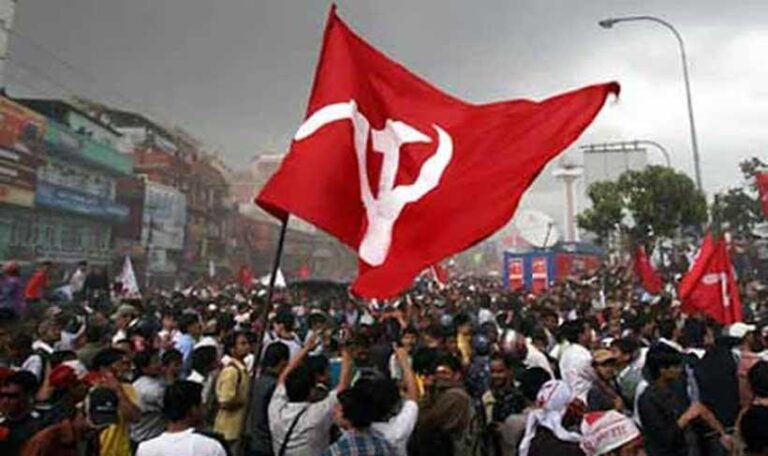Over the past five decades, the Maoist insurgency emerged as one of India’s most persistent internal security challenges, rooted in deep-seated socio-economic inequalities and galvanized by radical leftist ideology. Dubbed the country’s gravest internal threat at its peak, the Maoist movement-also known as the Naxalite rebellion-spread across vast stretches of rural and tribal India, challenging state authority through armed conflict and ideological mobilization. However, recent years have witnessed a marked decline in their influence and capabilities. This article explores the rise and now apparent fall of the Maoist movement in India, analyzing the complex interplay of political responses, development initiatives, and shifting grassroots support that have reshaped the country’s internal security landscape.
Origins and Ideological Foundations of the Maoist Movement in India
Emerging from the confluence of radical leftist ideologies and indigenous grievances, the Maoist movement in India rooted itself deeply in the socio-economic disparities that afflicted the country’s rural and tribal populations. Inspired by the principles of Mao Zedong’s agrarian revolution, the movement drew upon Marxist-Leninist-Maoist philosophy to challenge existing state structures and capitalism, advocating for a proletarian uprising through “people’s war.” Its ideological fabric was woven around the belief in armed struggle as a catalyst for societal transformation, particularly emphasizing the liberation of marginalized communities who suffered systemic neglect and exploitation.
The movement’s foundation encapsulated a battery of critical elements, including:
- Class Struggle: Mobilizing peasants and tribal groups against landlords, paramilitary forces, and corporations.
- Anti-Imperialism: Resistance against perceived neo-colonial influences impacting India’s economy and resource control.
- Self-Reliance: Establishing parallel governance through ‘liberated zones’ to foster local autonomy.
Below is a quick overview of the core ideological milestones that shaped the movement’s trajectory:
| Year | Ideological Development | Impact |
|---|---|---|
| 1967 | Naxalbari Uprising | Ignited armed peasant revolt in West Bengal |
| 1980s | Emergence of CPI (Maoist) | Consolidation of fragmented Maoist factions |
| 2004 | Formation of People’s Liberation Guerrilla Army (PLGA) | Structured military wing enacted sustained insurgency |
Impact on Rural Communities and Governance Challenges
The Maoist insurgency deeply altered the fabric of many rural communities across India, particularly in states such as Chhattisgarh, Jharkhand, and Odisha. While initially emerging as a response to decades of systemic neglect and exploitation, the movement’s prolonged violent confrontations resulted in significant disruptions to local economies and social structures. Villages often found themselves caught between the rebels and government forces, leading to widespread displacement, loss of livelihoods, and erosion of traditional governance mechanisms. Access to education, healthcare, and infrastructure, already limited in these remote areas, was further hampered by the ongoing conflict.
Governance challenges compounded the crisis, as state administrations struggled to assert authority and deliver basic services in insurgency-affected zones. The dual challenge of combating armed insurgents while winning over local populations exposed critical weaknesses in policy implementation and security strategies. Some of the issues faced include:
- Inadequate coordination between central and state authorities
- Corruption and mistrust between government officials and villagers
- Limited engagement with tribal leaders and elders who historically managed local dispute resolution
- Difficulty in balancing security operations with the protection of civil rights
| Governance Issue | Impact on Communities | Response Strategy |
|---|---|---|
| Security vs Development | Restricted economic growth and mobility | Integrated development with security operations |
| Local Leadership Marginalization | Breakdown in dispute resolution | Inclusion of tribal councils in decision-making |
| Corruption and Distrust | Community alienation from state | Transparency initiatives and community policing |
Strategies for Reconciliation and Sustainable Development in Former Maoist Regions
Addressing the deep-rooted grievances that fueled the Maoist insurgency requires a multifaceted approach prioritizing both social healing and economic opportunity. Efforts to rebuild trust between affected communities and state authorities hinge on inclusive dialogue, transparent governance, and the active participation of tribal leaders and local stakeholders. Programs focusing on
land rights restoration, improved access to education, and healthcare have shown promise in dismantling the isolation that once allowed extremist narratives to thrive. Moreover, integrating former insurgents through rehabilitation and vocational training schemes is pivotal for preventing relapses into violence.
Sustainable development strategies underscore the importance of eco-sensitive initiatives that generate long-term livelihoods while preserving natural resources. Initiatives such as community-led forest management, renewable energy projects, and sustainable agriculture not only create economic incentives but also reinforce local stewardship of the environment. The following table highlights key reconciliation initiatives alongside their developmental impacts:
| Initiative | Main Goal | Developmental Impact |
|---|---|---|
| Tribal Land Rights Act | Secure land ownership | Empowers communities, reduces conflict |
| Skill Development Centers | Rehabilitate ex-combatants | Employment opportunities, social integration |
| Community Forest Management | Protect natural resources | Environmental conservation, income generation |
| Renewable Energy Projects | Clean energy access | Improved quality of life, sustainable growth |
- Multi-sectoral collaboration between government agencies, NGOs, and local communities is essential.
- Targeted investments in infrastructure can bridge gaps in connectivity and resource distribution.
- Cultural preservation efforts help rebuild identity and pride in affected regions.
The Conclusion
As the Maoist movement in India recedes from its peak influence, the complex legacy it leaves behind continues to shape the country’s socio-political landscape. Once a formidable force challenging the Indian state, the movement’s decline signals not only a shift in insurgent tactics but also highlights enduring issues of poverty, land rights, and governance that remain unresolved. While security operations have curtailed its reach, the underlying grievances that fueled its rise persist, suggesting that the story of India’s Maoists is far from over.




